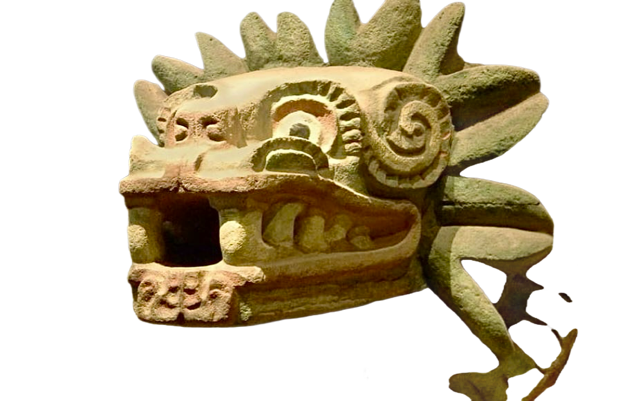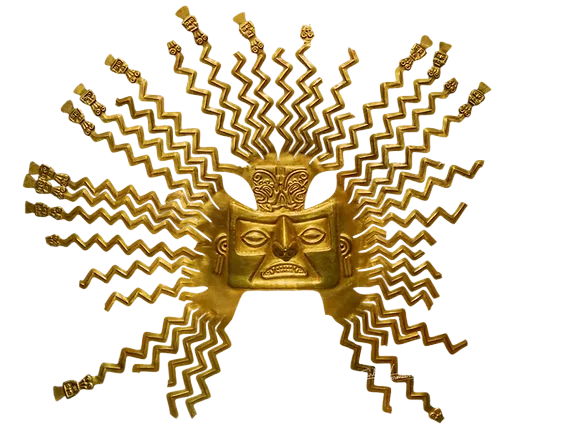Symbolism & Mythology in Pre-Columbian Art
Pre-Columbian art is a rich tapestry woven from the diverse cultures that flourished in the Americas before the arrival of European colonizers. Civilizations such as the Maya, Aztecs, and Incas imbue their artworks with complex symbolism and mythology that reflect their religious beliefs, social structures, and cosmological views. This article explores pre-Columbian art’s intricate symbolism and mythology, shedding light on the deeper meanings behind these ancient masterpieces.
The Maya: A World of Gods and Kings
The Maya civilization, known for its sophisticated writing system and astronomical knowledge, produced art with symbolic meanings. Maya art centrally explores the concept of the cosmos, which they divided into three realms: the heavens, the earth, and the underworld, or Xibalba. They often represent this tripartite division through vertical compositions in their art.
A prominent example is the depiction of the World Tree, or Wacah Chan, which connects the three realms. The tree’s roots extend into the underworld, its trunk symbolizes the earthly plane, and its branches reach the heavens. Artists often show the World Tree with a serpent at its base, representing the underworld, and a bird at its top, symbolizing the celestial realm. This motif underscores the Maya belief in the interconnectedness of all levels of the universe.

Kings and deities are another significant focus in Maya art. Rulers were often depicted in elaborate headdresses and costumes, symbolizing their divine right to govern. The headdresses frequently featured motifs such as jaguars, serpents, and birds, each representing different aspects of power and the sacred. The Maya associated the jaguar with strength and the underworld, while they linked the serpent to rebirth and fertility.
The Aztec: A Pantheon of Powerful Deities
The Aztec civilization, which dominated central Mexico in the 14th to 16th centuries, left behind a wealth of art that provides insight into their complex religious beliefs. The Aztecs worshipped a pantheon of gods, each associated with different aspects of life and nature. These deities were often depicted in their art, each with distinctive symbols that conveyed their powers and attributes.
Huitzilopochtli, the god of war and the sun, is one of the most prominent figures in Aztec art. Artists often depict him as a hummingbird or an eagle, animals associated with the sun and warriors. They load his images with symbols of warfare, such as shields, spears, and hearts, representing the sacrifices made to sustain him. This god’s representation underscores the Aztec emphasis on warfare and human sacrifice as central elements of their religious practice.

Quetzalcoatl, the feathered serpent god, is another crucial figure in Aztec mythology. Represented as a serpent adorned with quetzal feathers, Quetzalcoatl symbolizes the dual aspects of the divine and the terrestrial. The feathers signify the heavens, while the serpent represents the earth. This duality reflects the Aztec belief in the cyclical nature of life, death, and rebirth.
The Inca: Divine Kingship and the Natural World
In the Andean highlands, the Inca civilization created art that reflects their reverence for nature and their concept of divine kingship. The Inca believed that their emperor, or Sapa Inca, was a descendant of the sun god Inti, and this divine connection is evident in their art.
Sun motifs are prevalent in Inca art, often appearing in gold artifacts and architectural designs. Gold, believed to be the sun’s sweat, was a sacred material used to create elaborate ceremonial objects. The sun disk, or Inti Raymi, commonly represents the sun god and his life-giving energy. These symbols reinforced the emperor’s divine right to rule and the central role of the sun in Inca cosmology.

Inca art also reflects a deep connection to the natural world. Animals such as llamas, condors, and pumas are frequently depicted, each holding specific symbolic meanings. The llama, a vital animal for transport and agriculture, symbolizes prosperity and sustenance. Soaring high in the Andes, the condor is associated with the heavens and acts as a messenger between the earthly and divine realms. The puma represents strength and is often associated with the earth.
Symbolism Across Civilizations: Common Themes
While each pre-Columbian civilization had unique artistic traditions, some common themes and symbols transcend cultural boundaries. One such theme is using animals to represent divine or natural forces. Jaguars, serpents, eagles, and other animals frequently appear in the art of different cultures, each imbued with specific symbolic meanings. These animals often act as intermediaries between the human and the divine, reflecting the belief in a world where nature and the supernatural are intertwined.

Another common motif is the depiction of deities and rulers with elaborate regalia that signify their power and divine status. These figures are often shown with headdresses, jewelry, and weapons, symbolizing their connection to the gods and authority over the earthly realm. Using such symbols helped legitimize their rule and convey their role as intermediaries between the human and the divine.
Conclusion
The art of pre-Columbian civilizations is a testament to their rich mythological and symbolic traditions. Through intricate depictions of gods, animals, and cosmological concepts, these artworks provide a window into ancient peoples’ spiritual and cultural lives. By understanding the symbolism and mythology embedded in these pieces, we can better appreciate the complexity and depth of pre-Columbian art and the civilizations that created it.
Why a Certificate of Authenticity is Essential When Purchasing Artifacts
Research Academic Papers and News Articles
